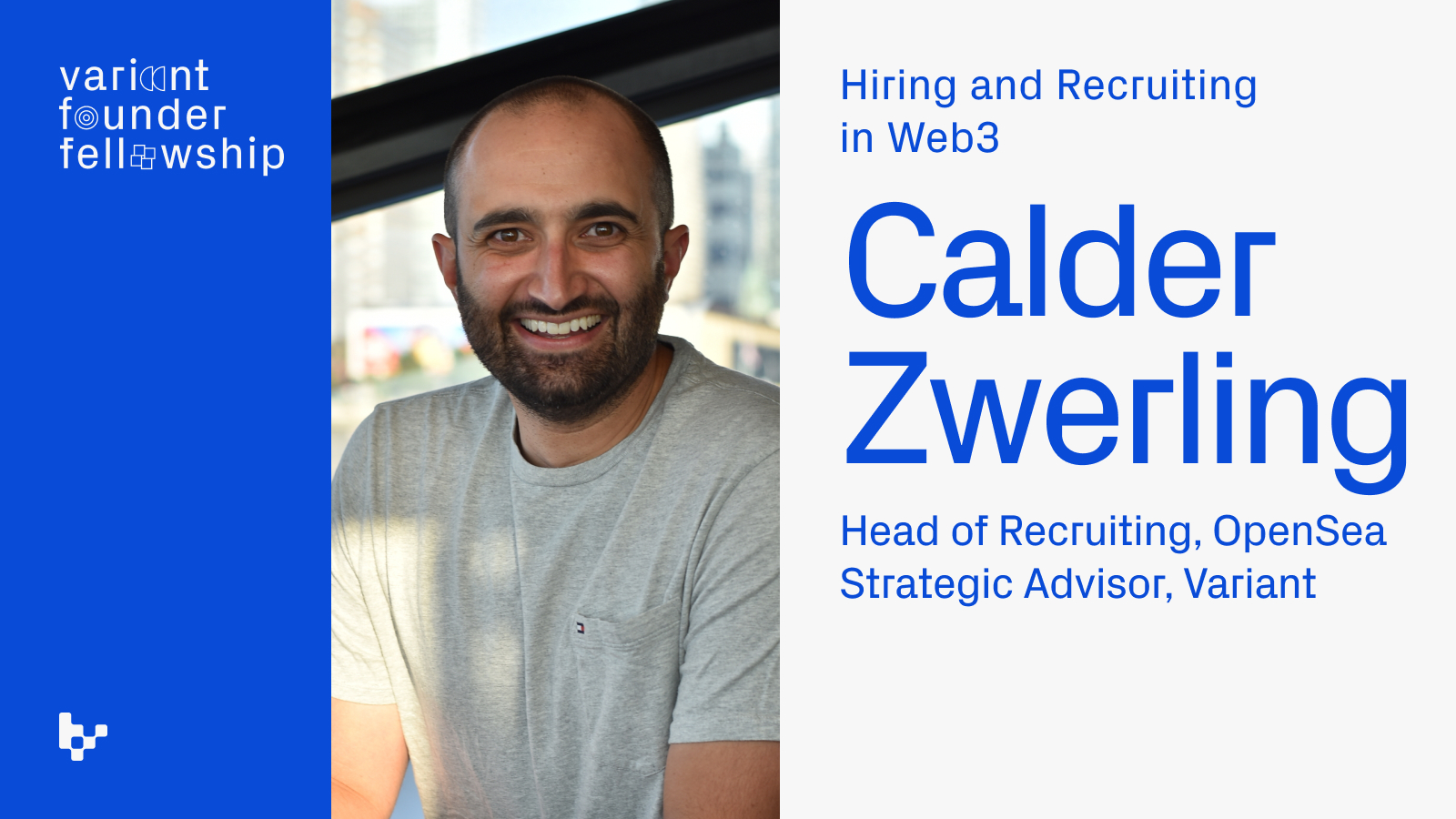Variant Team

Recruiting and Hiring for Early-Stage Web3 Startups: OpenSea’s Calder Zwerling
The good news: Your early-stage crypto company is growing. The bad news? You need to recruit—and fast.
Relax. “Recruiting should be fun,” says OpenSea head of recruiting (and Variant strategic advisor) Calder Zwerling. “It’s a lot like dating.”
In a special Q&A for our inaugural Variant Founder Fellowship cohort, Calder shared how to take your hiring process from stressful to strategic, identified places to find web3 talent, and explained why there are better ways to evaluate candidates than a take-home test.
Below the video, check out our three big takeaways from his talk.
Crypto winter = Good time to hire.
Yes, crypto winter has dampened excitement for web3 in some corners; many engineers are applying for AI jobs instead. But that’s a good thing for web3 recruiters: “The people that are coming to us, they’re not just chasing a fad,” Calder says. “They truly believe.” (Learn where early-stage companies should look for web3 talent, according to Calder, at 5:10.)
Establish your process early.
Early-stage companies often make hiring harder than it has to be by waiting until later to establish their processes. He recommends scoping out and clearly defining the role, creating interview pre-briefs and debriefs, and holding kickoff meetings with interviewers. “You’re going to have a much more efficient process if you do the work early,” Calder says. (Learn the three types of recruiting firms, and which one can help you establish your hiring processes, at 8:35.)
Revise biased hiring processes to increase diversity.
Just as recruiting systems shouldn’t be created midway through the interview process, hiring for diversity shouldn’t be an afterthought. As Calder explains, “Candidates from a diverse background want to check off every single box in a job description” before applying. Therefore, craft job descriptions around desired competencies rather than years of experience to reduce hiring bias and expand your pool of applicants. (Hear Calder’s other recommendations for attracting diverse candidates at 50:25.)